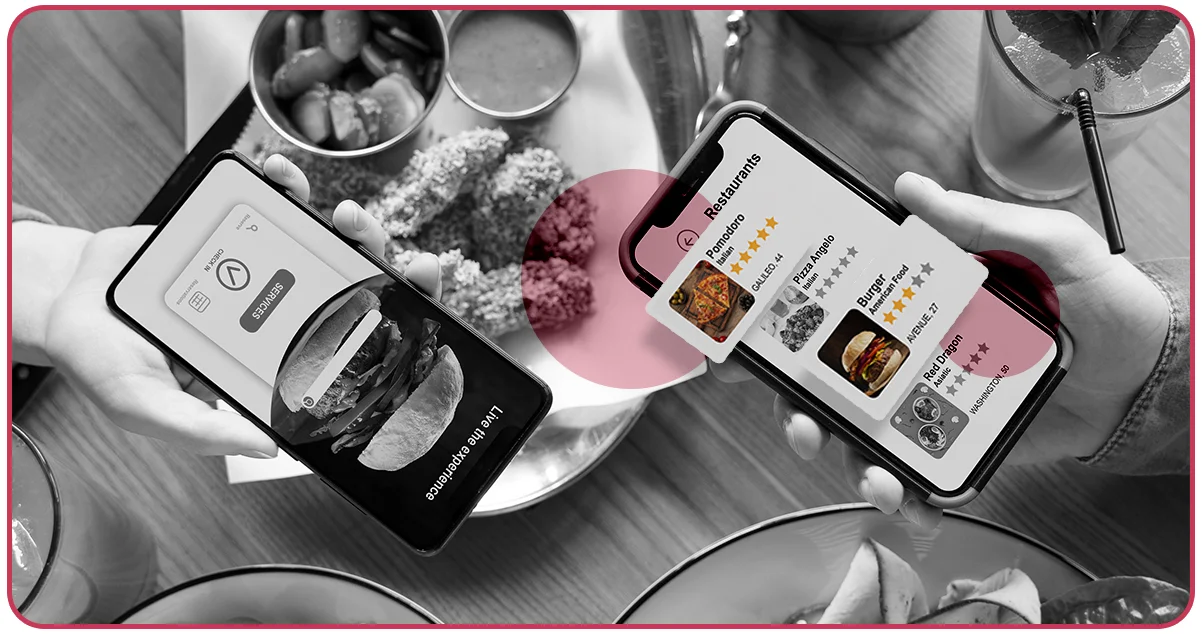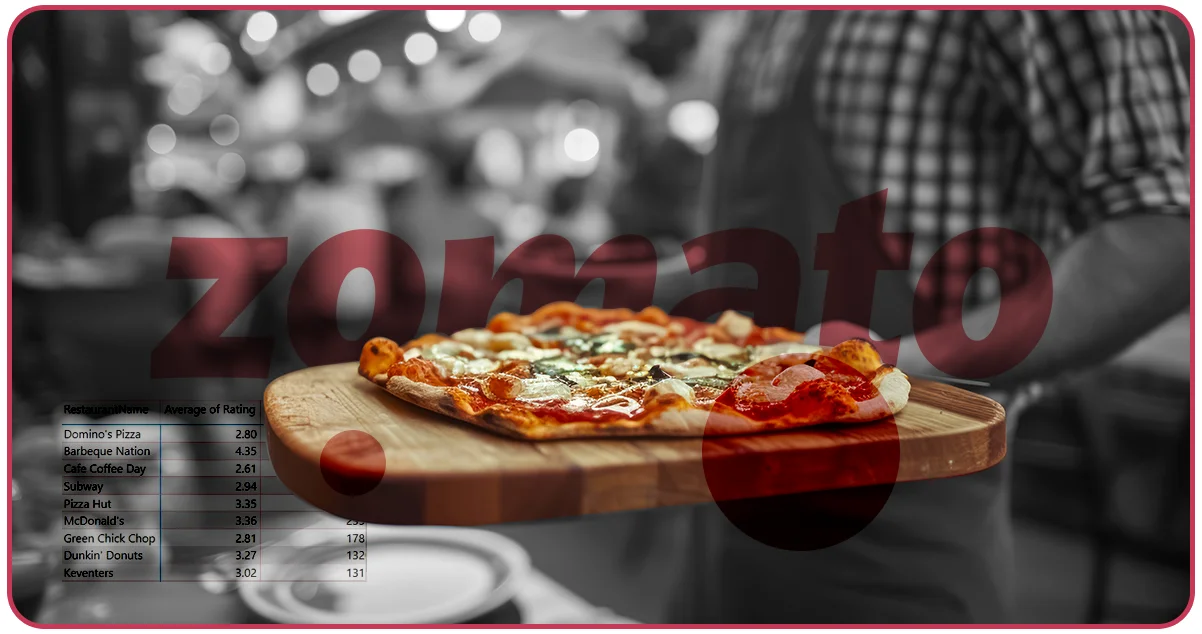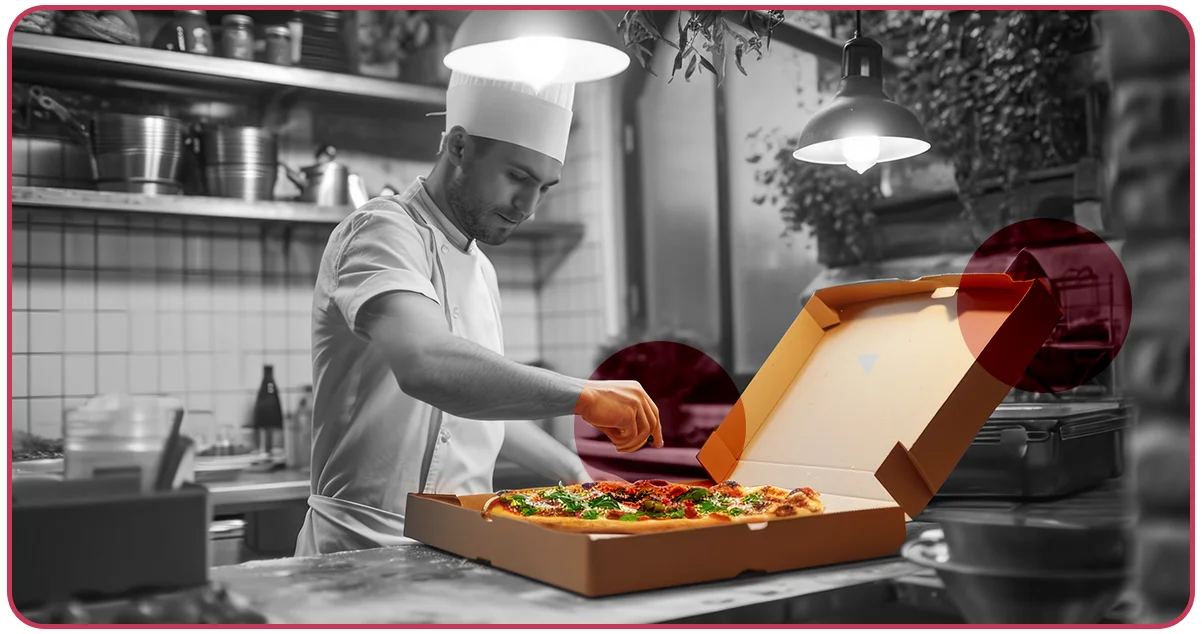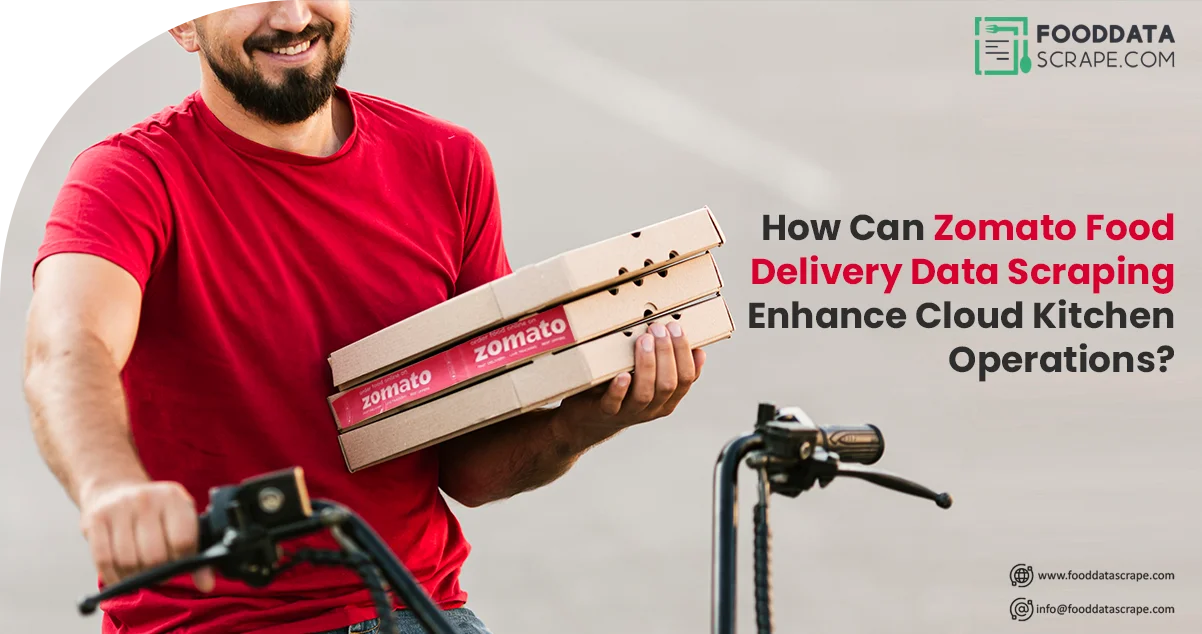In the age of digital transformation, data scraping in restaurants is a powerful weapon that helps restaurant owners understand the latest trends in the food industry. Web scraping restaurant data allows businesses to review and analyze large volumes of data from many online platforms, including popular delivery platforms like Zomato. Such data cover the cluster of information, namely the restaurant menus, prices, customer reviews, and delivery details, which is a complete picture of the consumption habits and market competition.
Zomato foods delivery data scraping is remarkably useful for improving the performance of cloud kitchen business. Through accessing information such as what people want, what is trending, how much things must be priced, and how consumers rate their services, the cloud kitchen operators can modify the menus and prices to ensure they serve the consumers as they demand. Besides that, Zomato data allows cloud kitchens to determine the gaps in the market, target particular demographics, and improve their service to optimize the efficiency of their business, thereby leading to high profits and business growth in a more competitive food delivery industry.
Types of Trends and Insights Collected from Zomato

In the fast-paced cloud kitchen space, gaining access to platforms like Zomato is indispensable for survival and success. Zomato data scraping is imperative to developing the menu and operational efficiency, both of which play essential roles in the fiercely competitive sector.
Cuisine Trends: Zomato data shows that consumers prefer specifically some cuisines, such as the growth of vegan food, local delicacies, and global fusion cuisine.
Dish Popularity: Analysis of the top orders on Zomato for cloud kitchens gives them the power of knowledge to make informed decisions about their menu's exact composition and ingredients for high-demand items.
Pricing Analysis: Data on the average price for a dish and consumer spending patterns assist cloud kitchens in setting competitive prices and calculating profitability.
Delivery Time Trends: By optimizing processes and knowing which periods have peak delivery figures and, on average, how long it takes to deliver using Zomato restaurant data scraping services, Cloud Kitchen can improve the efficiency of its business.
Customer Reviews: Analyzing Zomato ratings and feedback helps to further understand customers' likes and dislikes, the degree of their satisfaction, and possible shortcomings.
Restaurant Performance: Data such as restaurant ratings, customer engagement metrics, and the number of favorites allow cloud kitchens to assess their performance against their competition and find areas for growth.
Location-based Insights: The Zomato data scraper provides information about delivery zones, which allows cloud kitchens to build up high-demand locations and optimize their delivery radius for maximum productivity.
Seasonal Trends: Monitoring the shift in ordering trends and menu preferences from season to season helps cloud kitchens adapt their offerings to season demand and take advantage of trends
How to Incorporate the Above Data for Your Cloud Kitchen Business?

Incorporating insights acquired through Zomato into your cloud kitchen strategy is essential to achieving operational excellence and staying ahead of the competition. Here's a comprehensive guide on how to effectively utilize this data to drive success:
Menu Optimization: Dive deep into Zomato data to learn about trending cuisines, popular dishes, and customer preferences. A careful assessment of the menu food items that are most frequently ordered and associated with positive reviews enables optimizing your offerings to meet consumer expectations. You can include or focus on trendy dishes and remove those that don't bring any profits, thus creating a menu that will resonate with your target customers.
Pricing Strategy: Build your strategy around Zomato's pricing analysis data. Analyze how much the competitors charge for similar dishes and identify the price that better matches your range of offerings. Be sure to balance competitiveness and profitability, ensuring that the prices are going to be attractive to customers but profitable for your business.
Operational Efficiency: Incorporate the knowledge gained from Zomato to improve the efficiency of your operations, especially delivery logistics. Analyze delivery times, customer satisfaction ratings, and feedback to detect improvement areas. Streamline your delivery processes, optimize routes, and put in place strategies to minimize delivery times and enhance customer satisfaction.
Customer Engagement: Use Zomato reviews as an invaluable customer feedback channel to improve your cloud kitchen's efficiency and effectiveness. Consider both positive and negative reviews by answering complaints and taking positive steps that will make customers' experiences more enjoyable. Engage with customers directly through comments and replies to reviews, demonstrating that you value their feedback and are committed to providing outstanding service.
Market Expansion: Exploit location-based insights and seasonal trends by Zomato to expand market opportunities. Expanding to new geographical regions with a demand for your cuisine, modifying menus to reflect seasonal preferences, and launching targeted campaigns will help you gain new customers. If you make good use of Zomato statistics, you can increase your reach, enter new markets, and take advantage of trending topics.
Implementing Zomato intelligence into your cloud kitchen business strategy helps you to make decisions that enhance performance and lead to more growth for your business in the highly competitive food delivery industry.
Important Aspects to Keep in Mind While Scraping Zomato Restaurant Data

Scraping Zomato restaurant data can be helpful for businesses seeking market, consumer preferences, and insights into competitors' tactics. However, there are several essential aspects to consider to ensure the scraping process is conducted effectively and ethically:
Terms of Service: Study Zomato's terms of service and scraping policies in detail to ensure you abide by their rules. Keeping these terms is vital for the platform to prosper and avoid legal implications.
Rate Limiting: Consider Zomato's rate-limiting policies as a preventive measure to prevent overloading their servers and service from going down. Employ proper rate limit mechanisms in your script to slow down requests and avert overshooting of traffic quotas.
Data Privacy: Scraped data should be treated with utmost care and respect for user privacy. Do not collect personally identifiable data or sensitive information without express consent. Moreover, ensure you store the collected data securely and handle it responsibly.
Robust Scraping Infrastructure: Architect a robust scraping platform that can handle voluminous data in real time. Build an error-handling mechanism to cushion against any mishaps that may be encountered during scraping and thus acquire reliable data extraction.
Ethical Considerations: Ensure that your scraping activities are ethical and responsible and do not negatively affect Zomato or its users. Refrain from scraping Zomato's website in a way that could hinder its service or violate its terms of use.
Data Quality: Endeavor to maintain high data quality throughout the scraping process. Incorporate data validation and cleansing tools to guarantee that the scraped data is accurate and consistent, ensuring quality analysis and insights.
Respect Robots.txt: Abide by the guidelines specified in Zomato's robots.txt file, which aim to outline any limitations or procedures concerning crawling activities. Respect robots.txt directives so you won't scrape pages or data that Zomato has prohibited.
Adhering to the important aspects of this process makes responsible and ethical execution of Zomato restaurant data scraping activities possible. This approach guarantees companies smooth compliance with platform guidelines and legal regulations while obtaining useful information to inform their business strategies.
Conclusion: Zomato data scraping for cloud kitchen businesses provides many opportunities for getting actionable insights and achieving success amidst the challenging food delivery market. Cloud kitchens can plan and implement a better menu selection, pricing policy, and operational process using the scraped market data, including consumer behavior and competitor strategies. Nevertheless, ethical and responsible scraping practices should be exercised following the terms of service and users' privacy rules set by Zomato. By paying enough attention to fundamental factors such as compliance, data quality, and ethical considerations, scraping Zomato data will be a valuable technique for cloud kitchens to make decisions and achieve sustainable growth in the competitive food delivery industry.
Are you in need of high-class scraping services? Food Data Scrape should be your first point of call. We are undoubtedly the best in Food Data Aggregator and Mobile Restaurant App Scraping, and we render impeccable data analytics and insights for strategic decision-making. With a legacy of excellence as our backbone, we help companies become data-driven, fueling their development. Please take advantage of our tailored solutions that will add value to your business. Contact us today to unlock the value of your data.

































































































